Search | Compare | Purchase
Search | Compare | Purchase
The AVE is one of the services of the Renfe operator and is the star of high speed, so much so that it has given popularity to all the high-speed trains that circulate on the Spanish network. With the AVE Renfe, the traveler can move throughout Spain and can also reach other countries. Renfe did not develop and launch the AVE overnight. All of this is the result of agreements, work, dedication and national and international collaboration. The need and opportunity arose to establish high-speed tracks and their respective trains and locomotives in Spanish territory. Renfe took the reins and the result was a success and still is. What is the reason for this success? Since when can these fast trains run on Spanish tracks? What maximum speed do they reach?
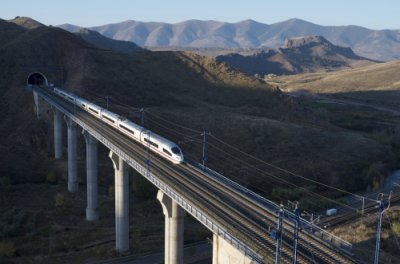
A few touches on the history of Renfe
It was in 1941 when the National Network of Spanish Railways, RENFE, was created. They wanted to nationalize the private railway companies and form a single public company. These were difficult times and the Spanish economy was not at its best. Nevertheless, the best that could be done was done and between 1941 and 1959 32 new sections were built. Over the years, changes and modernizations were implemented, such as changes in traction. Before steam, new electric and diesel locomotives and Talgo train units were incorporated.
Since its creation, Renfe needed approximately 10 years to overcome the difficulties and organize itself effectively and face the motorsport competitions of the moment, Enasa and Seat, both Spanish. They realized that it was necessary and urgent to modernize rail transport if they were to remain a booming and successful mode of transport. The automobile and the road were gaining points and the railway continued to lose users and increase the loss in the internal transport market. In 1879 the state saw it necessary to intervene and prevent the collapse of the railroad. Renfe promised to increase the efficiency of its services, but for this, it would need state funding to be able to invest in its infrastructure, among other aspects. In addition, an electrification plan for the railways had also been started. Program contracts were introduced, in which the State and Renfe set a series of objectives and also set contributions.
The "Contract of the century"
The origins of the AVE go back to 1988. Before 1988, the railway network in Spain was already extensive and frequently used. However, the tracks were all Iberian gauge. In order to introduce high-speed trains, it was decided to manufacture international gauge tracks, also known as standard gauge tracks.
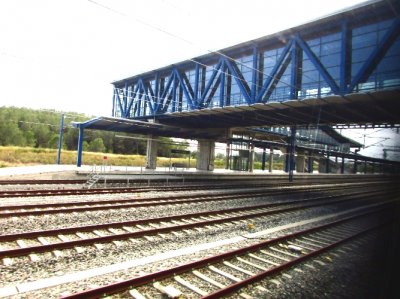
While in Europe most of the tracks were already of international gauge, Spain and Portugal lagged behind in this regard, although gauge changers had been introduced in 1960 (an automatic system that allows changing the gauge of a railway vehicle) to avoid train transfers. However, it was not a good idea as there were some derailments and other risk factors. It was then, in 1988, when it was decided to build the tracks with a standard gauge of 1435 mm and in 1992 the first line with this type of gauge was inaugurated, the Madrid-Seville High Speed Line.
Let's go back to 1988 and the so-called “contract of the century”. The Government of Spain approved the contract that Renfe summoned to modernize and renew its railway equipment. This contract was divided between the companies Alstom (French) and Siemens (German). The former supplied 24 high-speed trains and Siemens 75 high-power locomotives. 80% of the material that these companies would use had to come from Spanish companies, according to the contract. The work was fruitful and in 1992, the year of the Universal Exhibition of Seville, the first Spanish High Speed line was inaugurated under the AVE brand. Since then, the number of lines, locomotives and tracks has only grown and facilitated mobility between Spanish cities and the connection with Portugal and France.
In 1988 the high speed line between Seville and Madrid was already in mind. This line, which consists of 471 km, passes through geographically difficult places. It crosses the Sierra de Alcudia and the Sierra Morena.
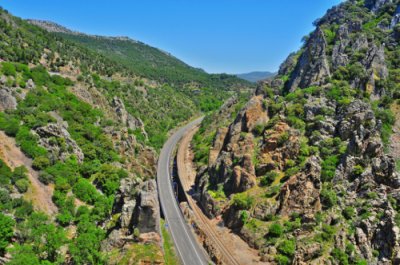
It was necessary to excavate many tons, build tunnels and viaducts and the most advanced techniques of the moment were used. A competition was called and the winners were the Alstom companies and the first AVE Renfe emerged, an evolution of the French TGV-Atlantic train and was renamed AVE series 100.
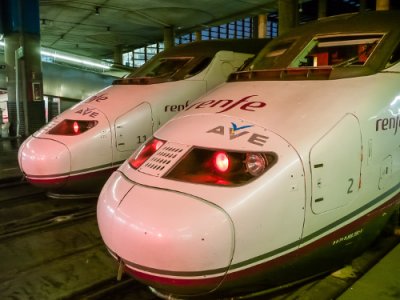
Since the inauguration of this line in 1992, the use of the AVE has not stopped increasing and in 1994 it already achieved a very important economic benefit. Renfe's AVE was a revolution in the railway field. Apart from improving and creating new high-speed routes, Renfe also greatly improved Renfe's Cercanías lines. The increase in AVE Renfe lines was gradual but little by little the network was growing. With Renfe AVE's "commitment to punctuality" this progress was pushed even further.
From 2005 until now, the company has innovated and modernized its services. In 2005 Renfe was divided into two, on the one hand ADIF (administrator of Railway Infrastructure) would take command to maintain the infrastructure and the operator Renfe would assume the provision of passenger and freight transport services. Both companies are public and operate under the Ministry of Development. The new high-speed lines after Seville-Madrid were those of Madrid-Barcelona-French Border and Huesca, Madrid-Valencia-Alicante, Madrid-Toledo, Córdoba-Málaga, Madrid-Valladolid-León and Zamora and Orense-Santiago de Compostela- Coruña and Vigo.
One aspect that positively affected the use of the AVE was when flexible prices were introduced in 2013 that added to the comfort and efficiency of Renfe's AVE. Before 2013, the AVE offered uneconomic prices that were not affordable for all budgets and this prevented the reception of new users and the use of the AVE among young people. A strategy was planned to be able to attract more customers and offer affordable prices. A series of discounts were applied, for example an 11% discount in Economy classes, a 30% discount with the Renfe youth card, etc. In just one year, sales improved. In addition, that more people travel by AVE is a benefit for the environment, CO2 emissions are drastically reduced since the AVE Renfe pollutes much less than the car or plane.
Today, Renfe has known how to adapt to the needs of society and continue to offer good services available to everyone. On trains.com you will be able to check that the prices are cheap and that you can choose between different schedules and classes, according to your availability and needs.
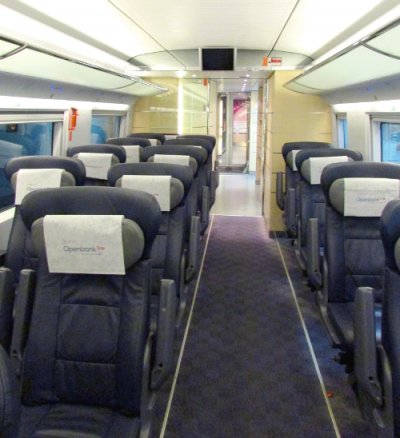
Renfe's AVE advances like lightning. It is capable of reaching 300 km / h. Renfe has other high-speed services such as the Alvia, the Avant and the Euromed. We are going to focus on the AVE. We have three classes of AVE, the Series 100, the Series 102/112 and the Series 103. The Series 100R AVE was the first AVE to circulate in Spain with the Madrid-Seville route. The existing TGV Atlántico was modernized and has been adapted technically and aesthetically. It is the train that transports us between Madrid and Seville. It is made up of eight cars and two extreme power heads. The vehicle can thus circulate in both directions of travel. The first car is reserved for Club class and also has a meeting room. Next we find two cars destined for the Preferential class, in the fourth we find the cafeteria and the remaining cars are for the Economy class. All of them are comfortable and wide and have an audio system, tables, air conditioning and information panels. We will also find trunks and toilets between the different wagons.
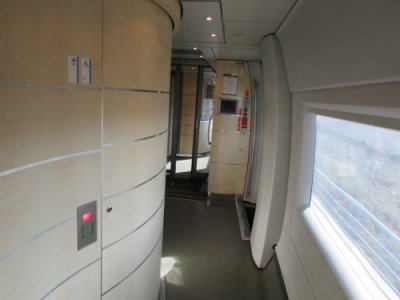
In second place we have the 102 series trains of the AVE Renfe since 2001 manufactured by Talgo and Bombardier. Its objective was to connect with the Mediterranean Corridor. It is a light rail that is also known as a "duck" because of the shape of the head of the vehicle.
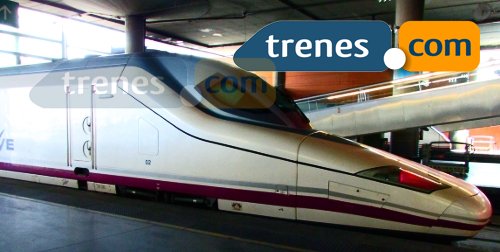
Finally we have the Renfe AVE Series 103, manufactured by the Siemens company in Germany and launched in 2007. This series is no longer articulated but has distributed traction and the entire interior space can be used. It is technically very advanced, energy is saved and acceleration is greater. Its main route is the line between Madrid-Guadalajara-Zaragoza-Lleida-Camp de Tarragona-Barcelona. These trains also have three classes, the Tourist, the Preferred and the Club and a car for the coffee shop.
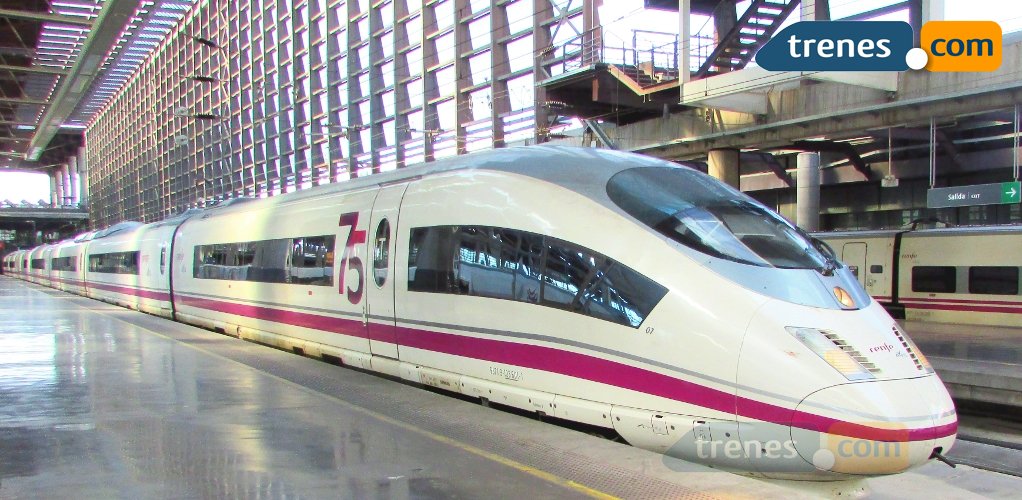
If you travel by Renfe AVE you can choose between different classes and benefits. You can travel in Economy or Preferential class. All of them are adapted for people with reduced mobility.
We must not forget that Renfe has other rail services such as the Alvia, the Avant and Euromed. The Alvias carry out long-distance routes on international gauge and / or Iberian gauge tracks, as they have a gauge change system. Avant carries out high-speed medium-distance routes and the Euromed connects the Mediterranean coast, such as the route between Barcelona and Alicante, and has been operating since 1997.
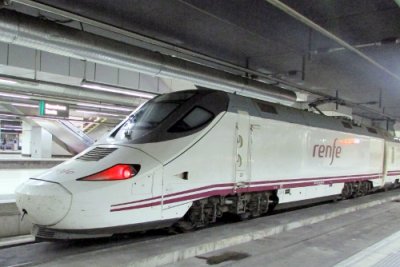
Expansion of the railway network in Spain
As previously mentioned, the first international gauge and high-speed railway line in Spain was the one that connects Madrid with Seville and was inaugurated on April 14, 1992. This event coincided with the Universal Exhibition of Seville, which increased the success. The AVE was the novelty, for the first time in the railway history of Spain, a train could circulate at more than 250 km / h, thanks to the European gauge tracks and the new locomotives. What was it that motivated the arrival of high speed in Spain? The rail transport situation was not going through its best moment. The existing road between Madrid and Andalusia allowed maximum speeds of only 70 and 100 km / h, the terrain between both destinations and the natural environment was not flat at all, it was complex due to its terrain.
A project was started that was to reduce the travel distance between Madrid and Seville by 100 km when, in 1981, a high-speed line was inaugurated in France that linked Paris with Lyon. Its success led to a change in the approach to the new track in Spain and they decided, in 1987, to build a new infrastructure with the gauge that prevailed in other European countries, the standard gauge of 1,435 mm. Already in view of the Universal Exhibition in 1992, this line was built in record time and history was made. In 1992 it was already possible to travel by AVE from Madrid to Seville and vice versa. The change was surprising: by conventional train it took approximately seven hours to travel from one place to another and with the AVE, slightly less than three. The model that traveled so fast was the Renfe AVE Series 100. Very soon, the AVE became the favorite transport compared to the plane for the Madrid-Seville trip.
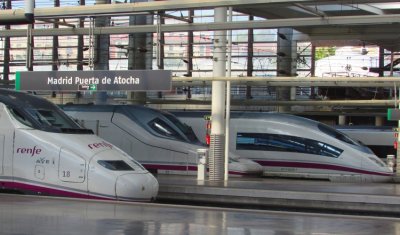
A few years later, the AVE already transported its travelers to the Costa del Sol with the Córdoba-Málaga High Speed Line. In 2007, this work was completed that linked Córdoba with Malaga, passing through Antequera and Puente Genil Herrera. Apart from inaugurating the line, new stations were inaugurated, such as those of Antequera-Santa Ana and that of Puente Genil-Herrera.
Another very important line is the Madrid - Zaragoza - Barcelona - French Border High Speed Line. This line contributes to uniting Spain with the rest of Europe. It took a few years to complete this impressive project. The land to be built on presented difficulties that could slow progress. However, little by little this line was built in sections. The first section from Madrid to Barcelona was completed in 2008. Subsequently, in 2010, the section between Figueres and Perpignan was completed and in 2013 the line was completed, finally joining Barcelona with Figueres. It is a very important line since it connects Barcelona with Madrid and with France and also passes through all the capitals of the Catalan provinces Lleida, Tarragona, Barcelona and Girona. The question is: How does the AVE cross the Pyrenees? In order to unite the two countries, the 8.2-kilometer Pertús tunnel was built. One extreme in Spain is located in La Jonquera (called the South Mouth) and the other extreme, in French territory, in Montesquieu des Albères (North Mouth).
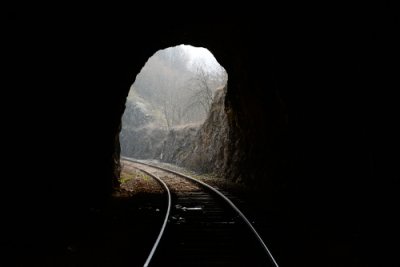
In Spain Renfe manages other no less important lines such as the one that connects Madrid and Toledo; the Madrid-Extremadura-Portuguese Border line, which is still under construction; the LAV Madrid-Alicante; and the LAV Zaragoza-Huesca, among others. There are many lines under construction, which are going to increase the functionality of the high-speed rail networks in Spain.
Now we are going to observe the effect that Renfe's AVE had on some railway stations. It was quite an impact. As examples we will put the Madrid Puerta de Atocha station, Zaragoza Delicias and Sevilla Santa Justa.
In Madrid, the influx of passengers and the future arrival of high-speed services suggested that it was necessary to remodel and expand the station. Other types of infrastructures would be needed so that the AVE Renfe could circulate. Between 1985 and 1992 the architect Rafael Moneo directed the remodeling work. Two new stations were then built, the Atocha Cercanías station (and an interchange with the Metro) for the lines that continue towards the La Castellana tunnel and the Puerta de Atocha station to host the new high-speed line. The original station was not demolished but conserved and transformed. The space was converted into a lobby and access to the two stations. Where the old tracks and platforms lay there is a tropical garden with plants of many different and exotic species. Additionally, there are also pets like Florida fish and turtles. Also, in that area, there are cafes, restaurants and traveler services.
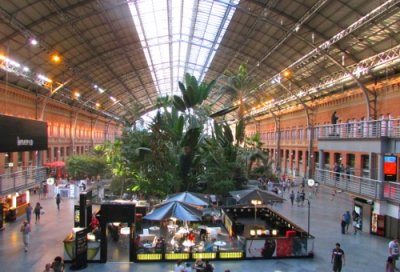
Likewise, the structure of the old station was preserved both inside and out, a majestic work directed by Alberto de Palacio Elissagne, a collaborator of Gustave Eiffel. As we can see in the image below, it presents an imposing and beautiful facade with more than one historical detail such as the clock that was installed in 1892.
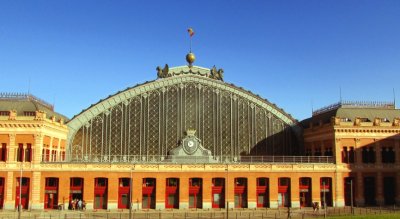
The station in Zaragoza is called Zaragoza-Delicias and it was inaugurated in May 2003, a few months before the arrival of the line that would connect Madrid with Zaragoza. The building is imposing and wide. It has a roof that was completely innovative at the time, it is about arches that are projected diagonally over the building and give it a lot of personality when viewed from a distance from the outside.
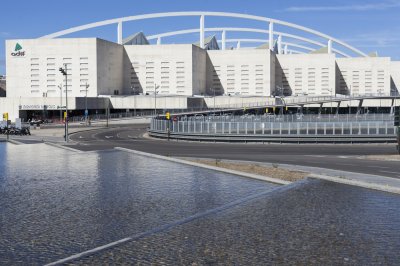
Finally, it is worth mentioning that the Seville-Santa Justa station, which was inaugurated in 1991, is the third most important station in Spain. It is located very close to the old town and absorbs Long and Medium Distance services and also Cercanías.
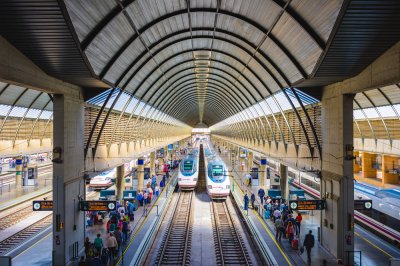
From trains.com we can only encourage you to travel by AVE, as it is a comfortable, punctual and cheap transport that will leave you wherever you want. What does the future hold? More lines, more stations and constant improvement. AVE Renfe is already an excellent service, but like any good company, they always seek constant improvement and satisfy the customer as much as possible.